Topic 5: Mix Questions
You have an Azure subscription named Subscription1 that contains a virtual network named VNet1. You add the users in the following table.

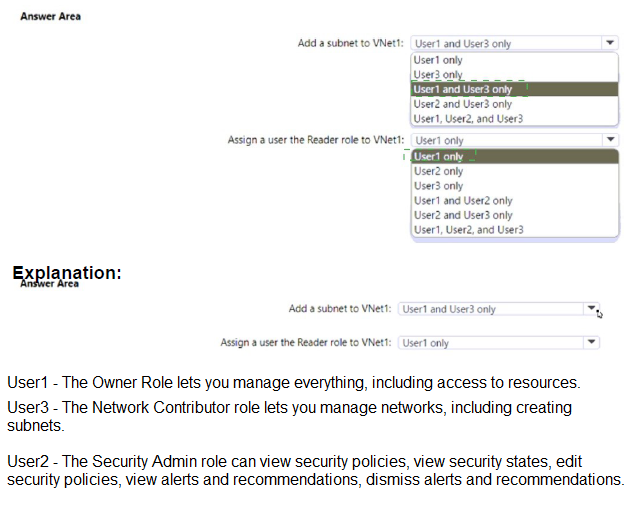
You have an Azure subscription named Subscription1 that contains the resources shown in the following table.
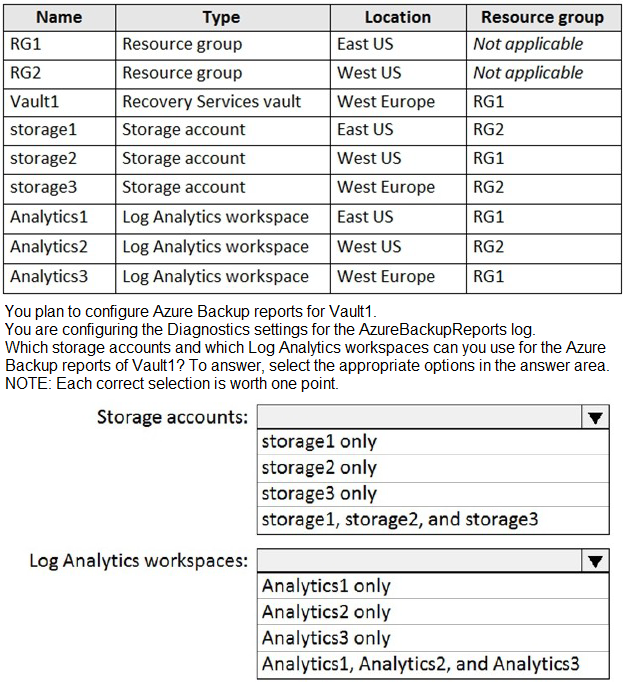
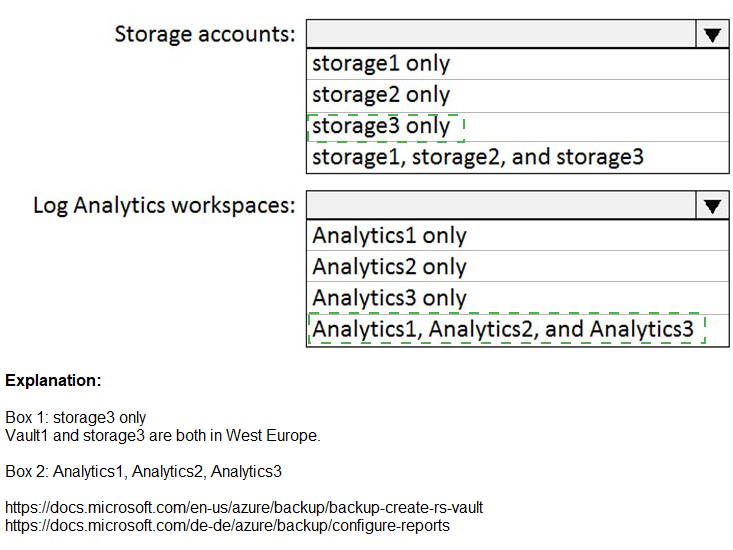
You have an Azure subscription.
You need to deploy a virtual machine by using an Azure Resource Manager (ARM) template.
How should you complete the template? To answer, select the appropriate options in the answer area.
NOTE: Each correct selection is worth one point.

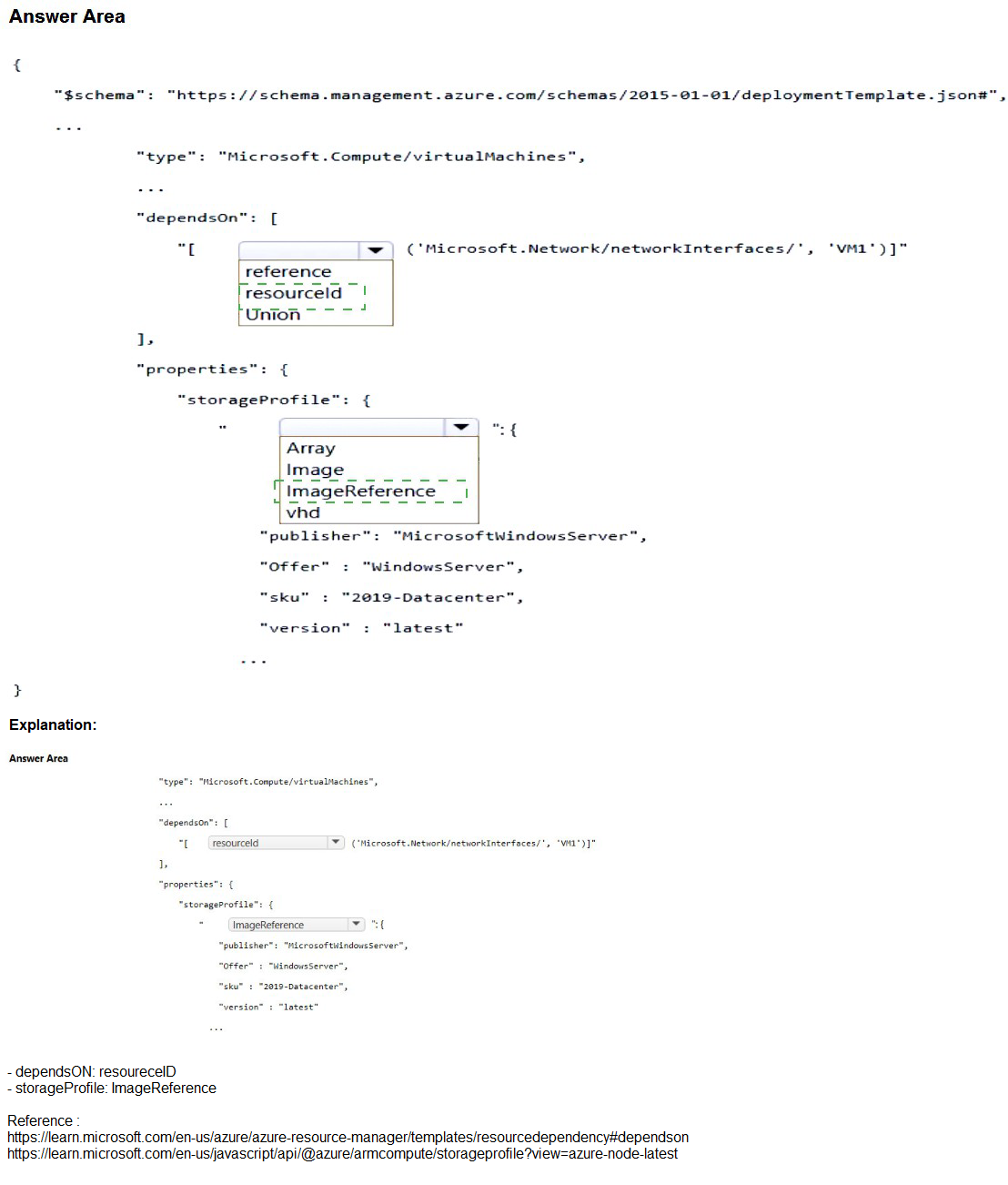
You have an Azure subscription that contains the resources in the following table.
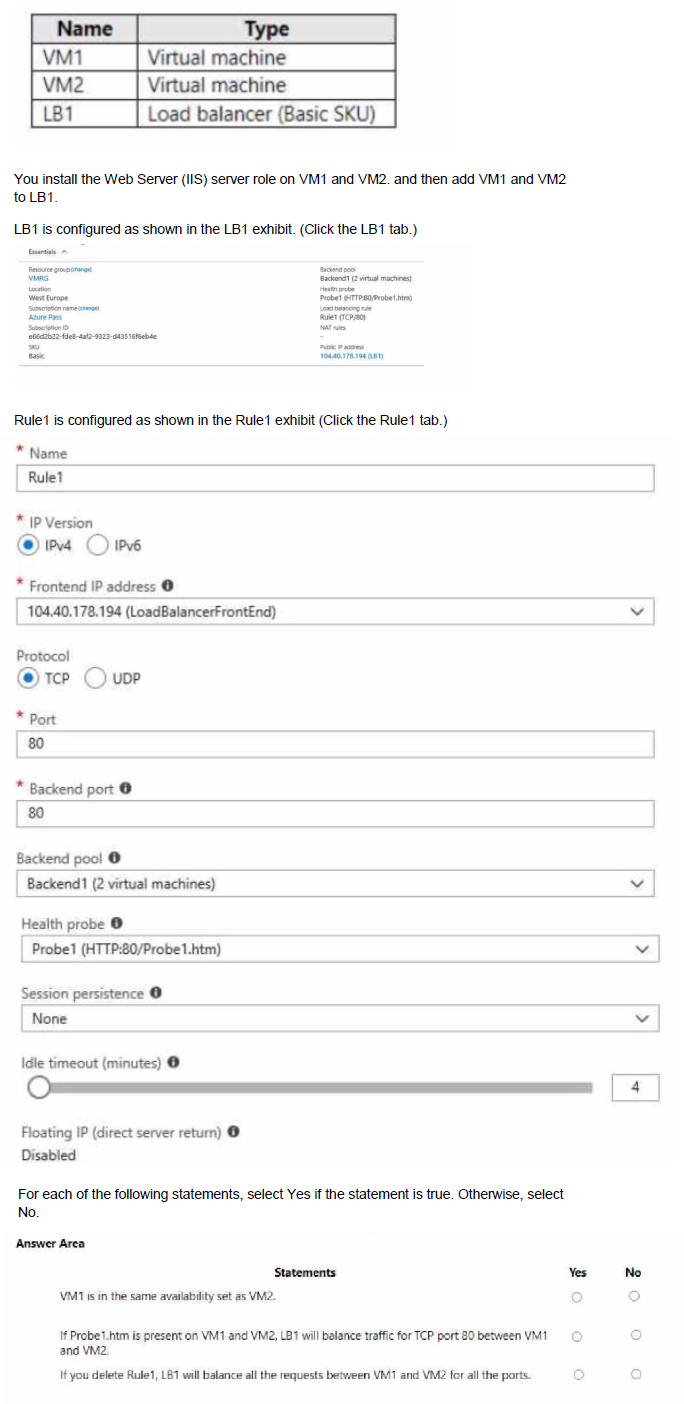
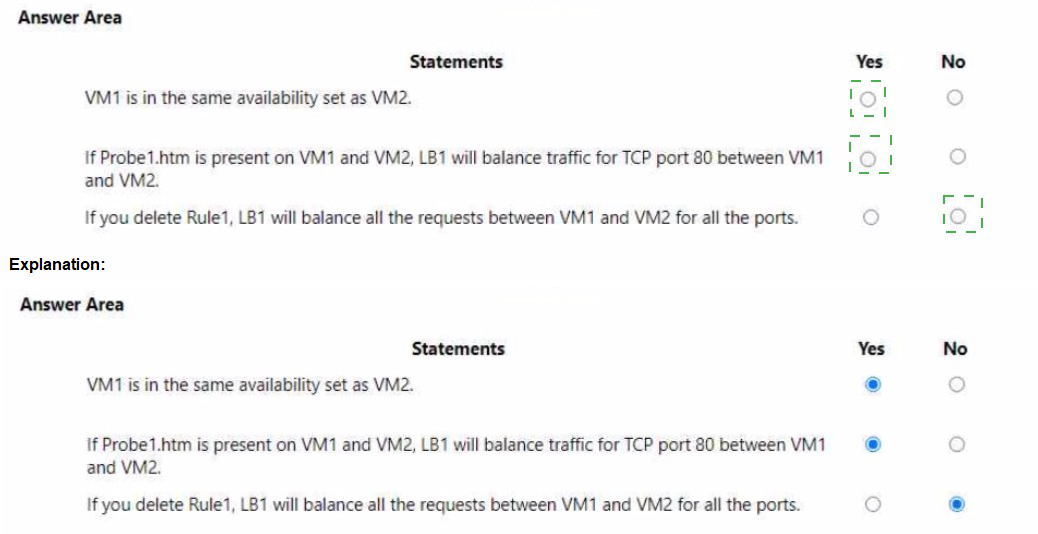
You have an Azure subscription that contains a storage account named storage 1. The storage1 account contains a container named container1.
You need to create a lifecycle management rule for storage1 that will automatically move the blobs in contained to the lowest-cost tier after 90 days.
How should you complete the rule? To answer, select the appropriate options in the answer area.
NOTE Each correct selection is worth one point.
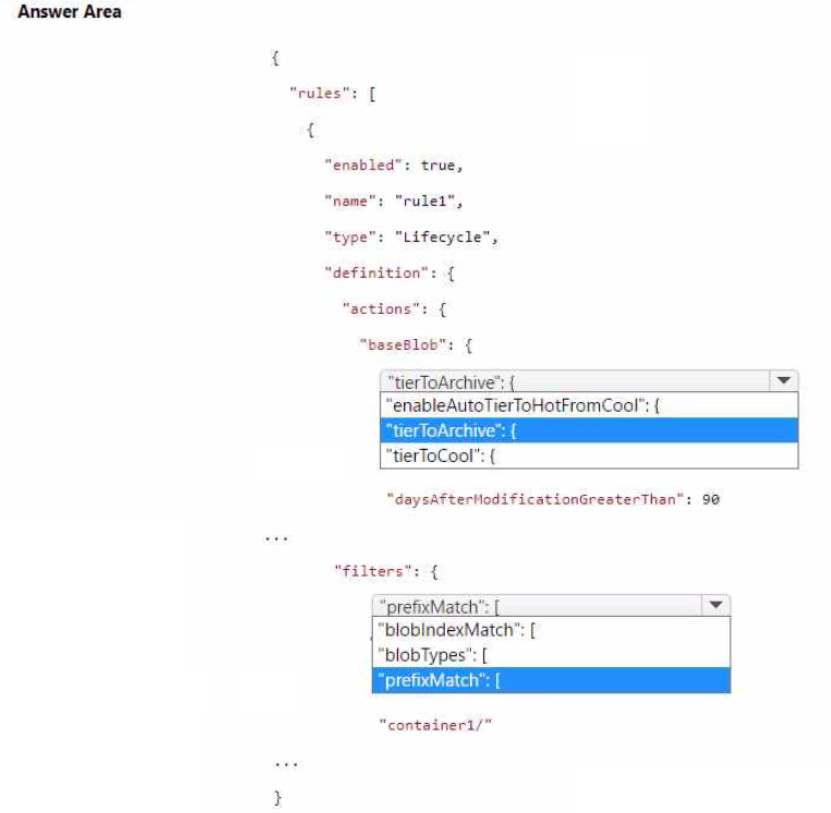
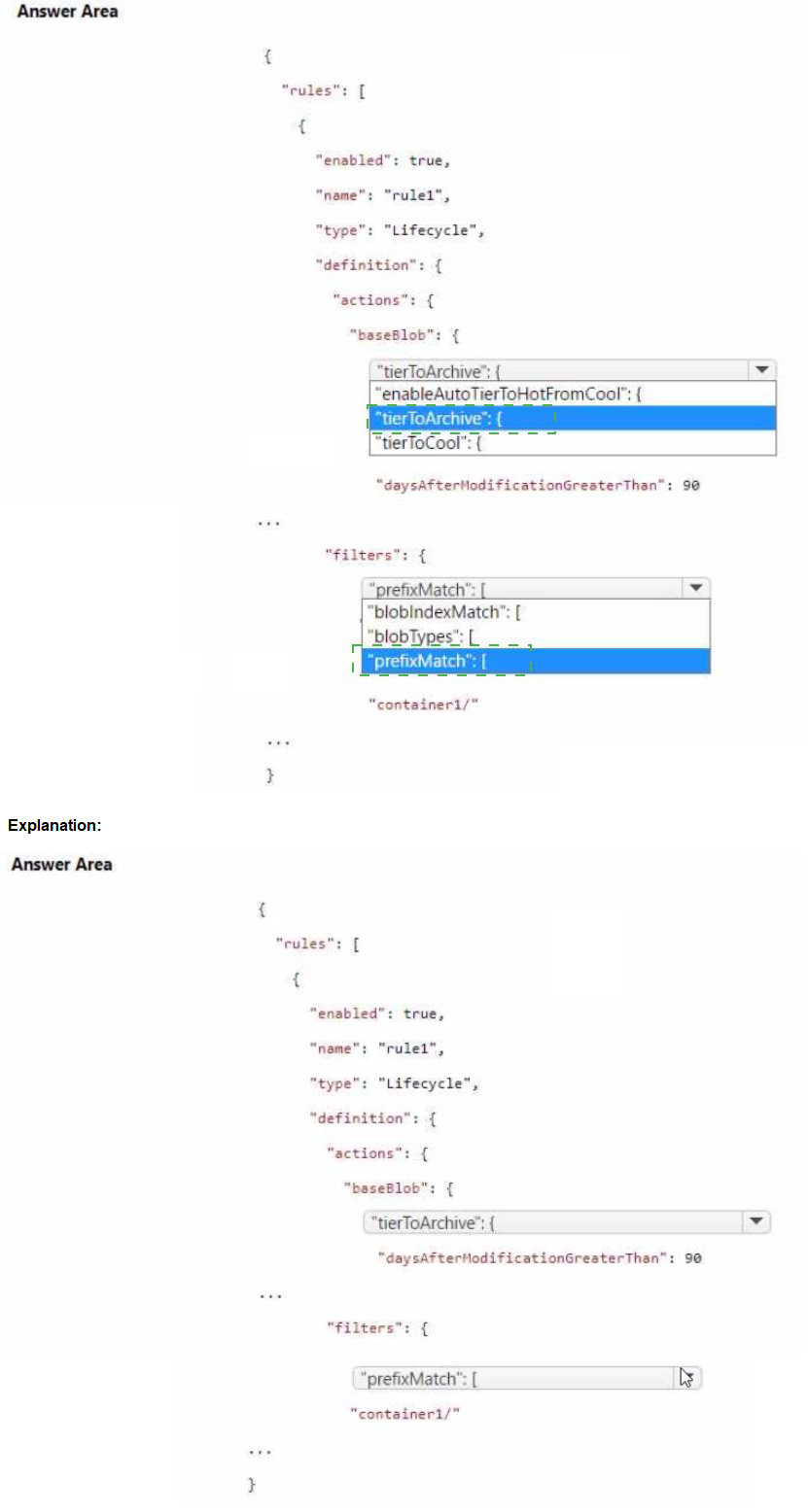
You have a Microsoft Entra tenant named adatum.com that contains the groups shown in the following table.
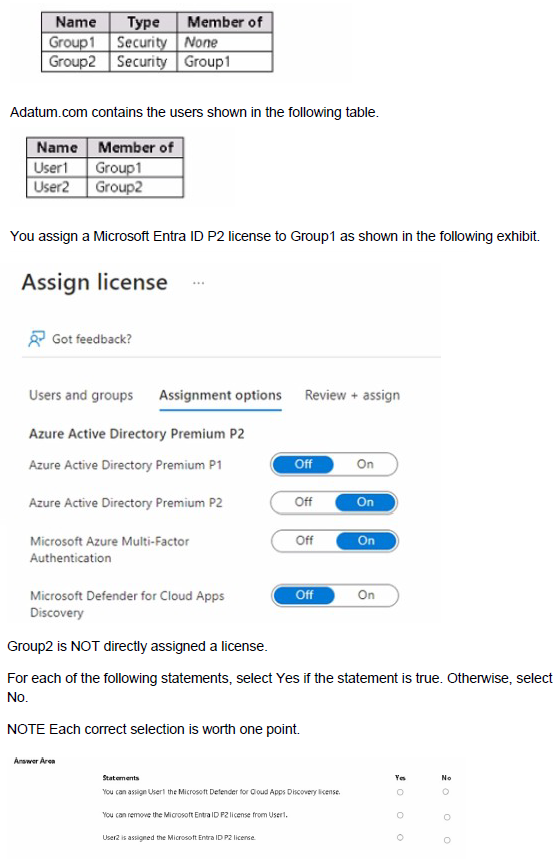

You have an Azure subscription that contains a user named User1 and a storage account named storage 1. The storage1 account contains the resources shown in the following table.
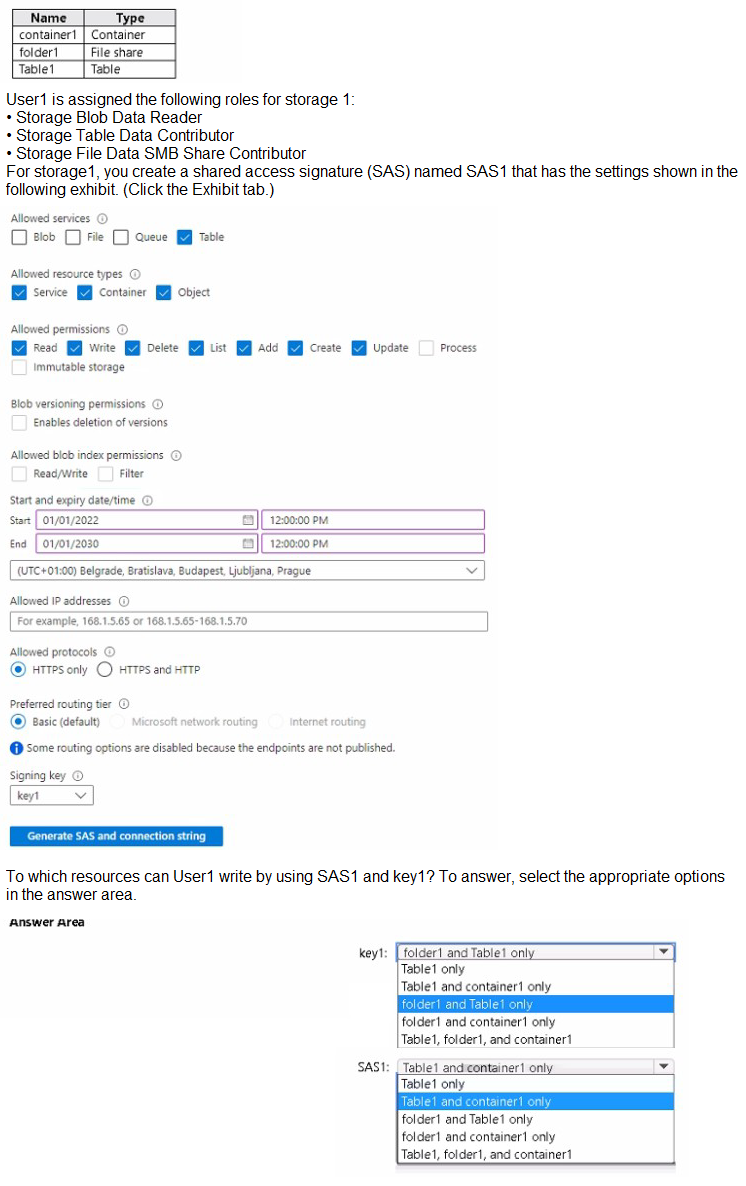

You need to configure an Azure web app named contoso.azurewebsites.net to host www.contoso.com.
What should you do first?
A.
Create a CNAME record named asuid that contains the domain verification ID.
B.
Create A records named www.contoso.com and asuid.contoso.com.
C.
Create a TXT record named asuid that contains the domain verification ID.
D.
Create a TXT record named www.contoso.com that has a value of contoso.azurewebsites.net.
Create a CNAME record named asuid that contains the domain verification ID.
You have an Azure subscription that contains multiple virtual machines in the West US Azure region.
You need to use Traffic Analytics in Azure Network Watcher to monitor virtual machine traffic.
Which two resources should you create? Each correct answer presents part of the solution.
NOTE: Each correct selection is worth one point.
A.
a Data Collection Rule (OCR) in Azure Monitor
B.
a Log Analytics workspace
C.
an Azure Monitor workbook
D.
a storage account
E.
a Microsoft Sentinel workspace
a Log Analytics workspace
a storage account
Explanation:
To use Traffic Analytics in Azure Network Watcher, you need to create a Log Analytics workspace and a storage account. A Log Analytics workspace is a cloud-based repository that collects and stores data from various sources, such as NSG flow logs. A storage account is a container that provides a unique namespace to store and access your data objects in Azure Storage. You need to enable NSG flow logs and configure them to send data to both the Log Analytics workspace and the storage account. Traffic Analytics analyzes the NSG flow logs and provides insights into traffic flow in your Azure cloud.
References:
Traffic analytics - Azure Network Watcher | Microsoft Learn
Traffic analytics FAQ - Azure Network Watcher | Microsoft Learn
You have an Azure subscription that contains an Azure Storage account.
You plan to create an Azure container instance named container1 that will use a Docker image namedImage1. Image1 contains a Microsoft SQL Server instance that requires persistent storage.
You need to configure a storage service for Container1.
What should you use?
A.
Azure Files
B.
Azure Blob storage
C.
Azure Queue storage
D.
Azure Table storage
Azure Files
Explanation: https://azure.microsoft.com/en-us/blog/persistent-docker-volumes-withazure-file-storage/
You have a virtual network named VNet1 that has the configuration shown in the following exhibit.
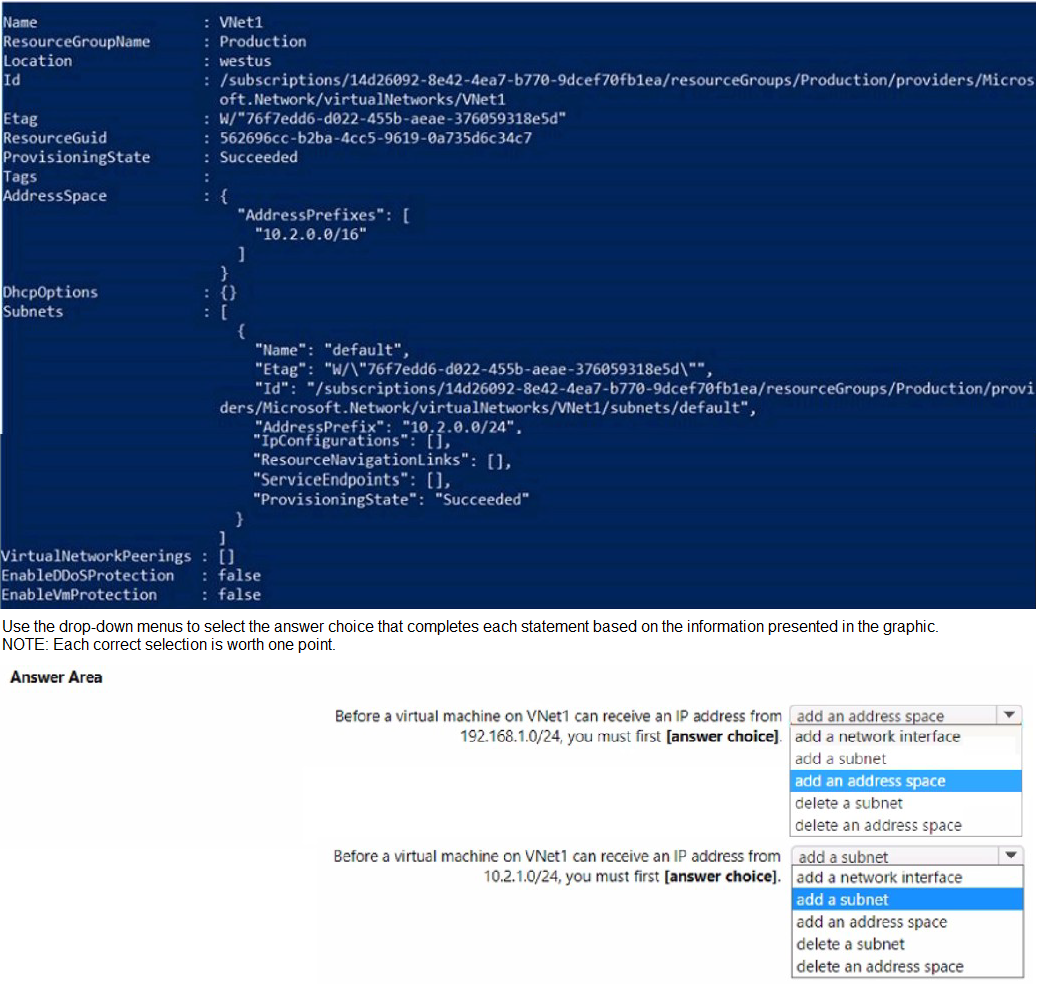
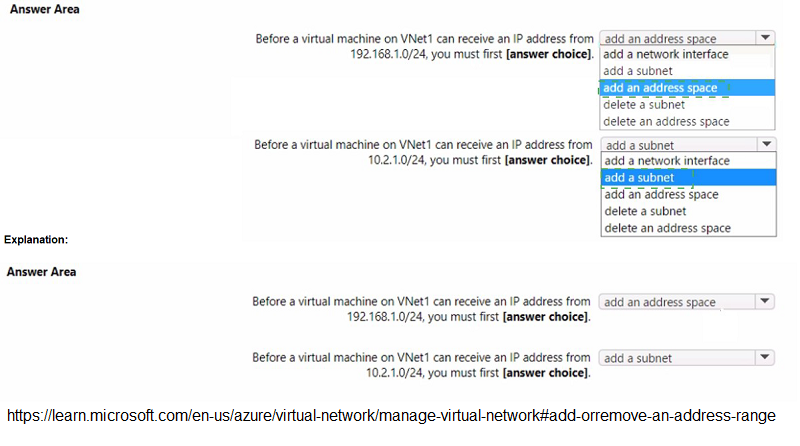
Note: This question is part of a series of questions that present the same scenario. Each question in the series contains a unique solution that might meet the stated goals. Some question sets might have more than one correct solution, while others might not have a correct solution.
After you answer a question in this section, you will NOT be able to return to it. As a result, these questions will not appear in the review screen.
You have an Azure subscription that contains the virtual machines shown in the following table.
You deploy a load balancer that has the following configurations:
•Name: LB1
•Type: Internal
•SKU: Standard
•Virtual network: VNET1
You need to ensure that you can add VM1 and VM2 to the backend pool of LB1.
Solution: You create a Standard SKU public IP address, associate the address to the network interface of VM1, and then stop VM2.
Does this meet the goal?
A.
Yes
B.
No
Yes
| Page 7 out of 27 Pages |
| Previous |